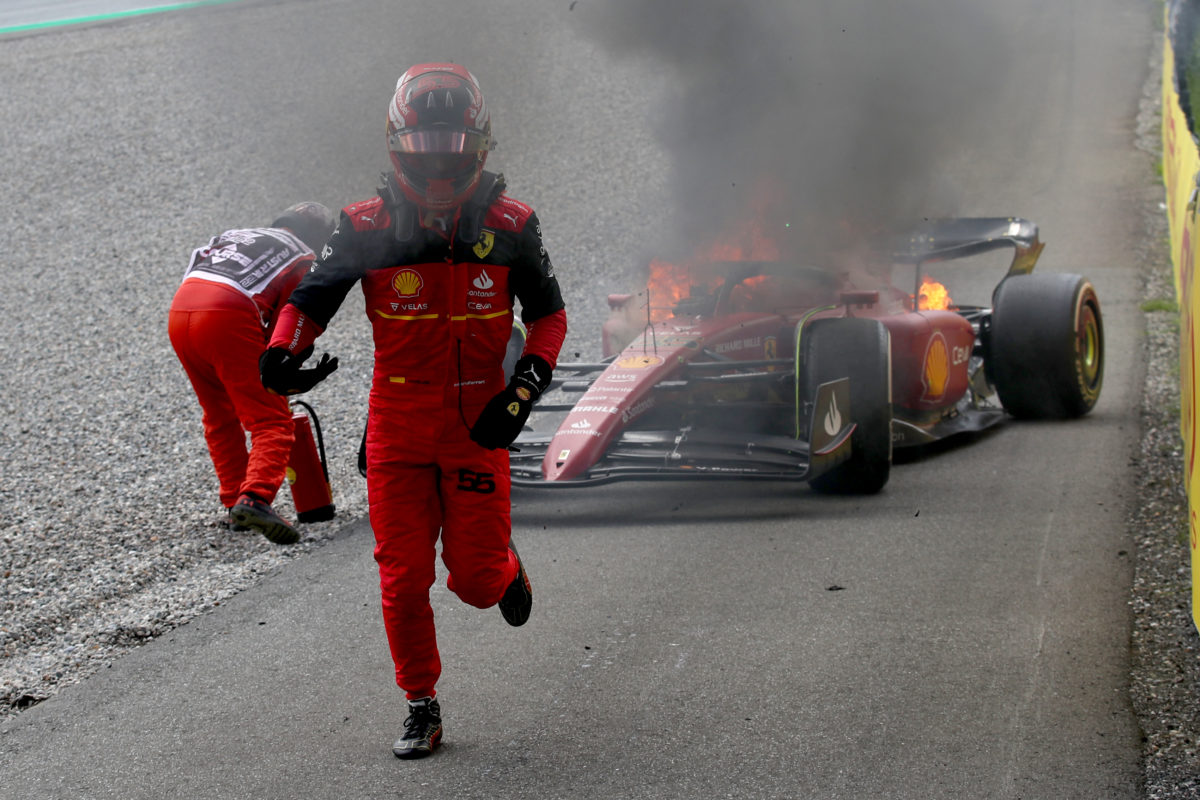
Ferrari is confident it has fixed the “Achilles heel” that plagued its 2022 campaign following a thorough overall of its power unit.
Following a strong start to the season, and leading Red Bull’s Max Verstappen by 19 points after the opening five races, Charles Leclerc’s season then began to unravel with two retirements in three grands prix.
Whilst comfortably leading the Spanish Grand Prix, Leclerc initially retired with a turbo and MGU-H failure.
Two races later in Azerbaijan, the Monégasque suffered a blowout of his PU, 13 laps after team-mate Carlos Sainz had exited with a hydraulics issue, which was the first of his own problems.
In Austria, Sainz’s power unit blew in spectacular fashion, with the Spanish driver forced into a hasty exit from his cockpit as his car caught fire.
Although power unit upgrades are currently outlawed as the regulations are frozen until the introduction of the new systems in 2026, teams are at least allowed to conduct work on reliability.
This has resulted in Ferrari power unit boss Enrico Gualtieri overseeing a comprehensive programme of checks to ensure there is no repeat of costly reliability woes this season.
“Reliability was our Achilles heel last season, and so we worked over the winter to solve our main problems to try and reach the desired level of reliability,” said Gualtieri.
“We worked mainly on those areas that gave us the most trouble last season, so we focused on the internal combustion engine and the electric motors.
“At the same time, we tried to capitalise on the experience gained on track last season, and so we looked at all the feedback and signs of weakness from the PU components we used.
“Clearly, this involved various design areas of some components, but at the same time, we also revised where necessary our assembly procedures.
“The work involved all the PU personnel, as well as our colleagues in the supply chain and our suppliers.”
Ferrari given “positive feedback”
With a longer off-season compared to previous years, Ferrari was at least afforded more time to work on its issues.
The team was able to fire up its system on February 3, with Gualtieri believing the relevant fixes have been applied.
“The work involved all areas, from design to experimentation, including the assembly process, to try and test new solutions in a very short space of time,” reflected Gualtieri.
“We also made the most of the experience gained in the second half of last season, and then further evolved some of the components where necessary.
“The work never ends, based on continuous improvement of the components to try and reach the required level of reliability.
“We’ve had some positive feedback on the test bench, on some of the changes we’ve introduced, but as usual the track will tell us if we’ve done a good job.”





















Discussion about this post